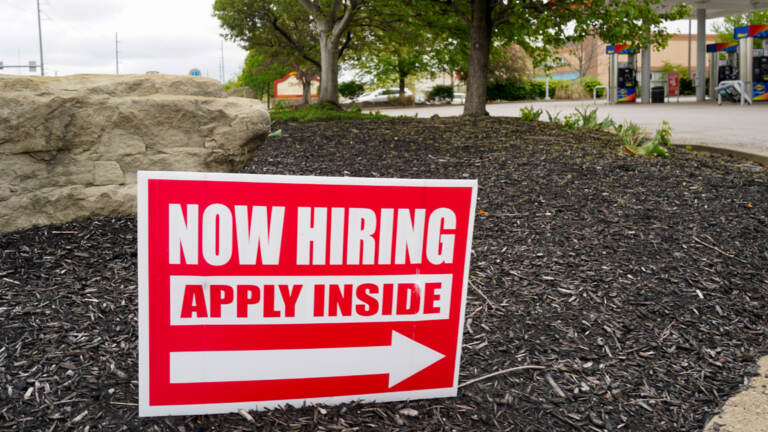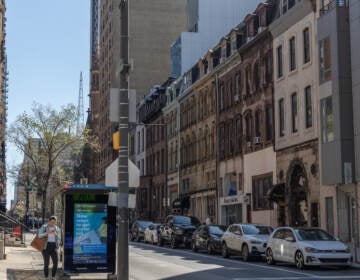Philadelphia metro labor market ‘really resilient’ as region rebounds
New data from the U.S. Bureau of Labor Statistics shows that health services and hospitality drove job growth across the Philadelphia metro area over the past 12 months.
Listen 1:38
A help wanted sign is pictured in this file photo. (AP Photo/Keith Srakocic)
The Philadelphia-Camden-Wilmington metropolitan statistical area added nonfarm 81,900 jobs over the past 12 months through April, according to the U.S. Bureau of Labor Statistics data released this week.
“It’s really remarkable how strong the Philadelphia area is going in terms of job growth,” said Michael Bognanno, a labor economist and professor at Temple University.
Of the jobs added over the past year, major drivers were in health care and hospitality: Health services and private education added 32,600 jobs, while leisure and hospitality added 20,500 jobs.
Government, which includes public education jobs, added 5,400 workers. Trade, transportation, and utilities added 4,000 jobs. The other services sector also added 4,000 jobs over the year. Manufacturing added 3,300 jobs, financial activities added 2,700 jobs, professional and business services added 2,000 jobs, information added 700 jobs, while mining, logging, and construction added 600 jobs.
There are some headwinds such as inflation, higher interest rates, and wage growth being stymied by a higher cost of living.
“The labor market is just proving to be really resilient in the face of the interest rate hikes that we’ve been seeing from the Fed,” Bognanno said. “As they attempt to quell inflation it gives you some confidence that we might be able to manage the kind of soft landing that people are hoping for.”
In April, the unemployment rate in Pennsylvania was 3.2%, in New Jersey 3%, and in Delaware 3.9%.
Nationwide, the unemployment rate for Black or African American residents in April was 4.7%, down from 5% one year ago. The overall U.S. unemployment rate was 3.4% in April, down from 3.6% last year.
That could bode well for Philadelphia, Bognanno said.
“Black employment has reached a new all-time low, that’s beneficial to the city of Philadelphia because we have a high minority population,” he said.
Bipartisan federal economic stimulus packages passed by Congress during the height of the coronavirus pandemic contributed to the economic rebound, said Stephen Herzenberg, executive director of the Keystone Research Center in Harrisburg.
“We now have steady job growth, very low unemployment, and falling inflation,” Herzenberg said.
Continued job growth in leisure and hospitality is attributed to that sector continuing to rebound from the height of the pandemic, while growth in health care is tied to the aging population statewide, he said.
One of the things that may be keeping workers on the sidelines is how low Pa. wages are compared to other states which are on track to require at least $15 minimum wage, such as New Jersey, compared to $7.25 in Pennsylvania.
“Many workers have come back [since the Great Resignation],” he said. “One of the things holding that back a little bit in Pennsylvania is how poorly we pay. People are not flocking back to jobs that pay $8, $9, $10 or $11 an hour with no benefits.”
WHYY is your source for fact-based, in-depth journalism and information. As a nonprofit organization, we rely on financial support from readers like you. Please give today.







